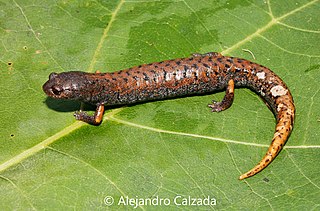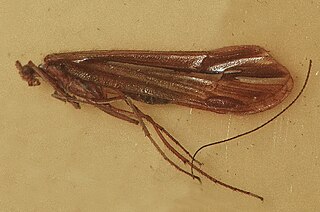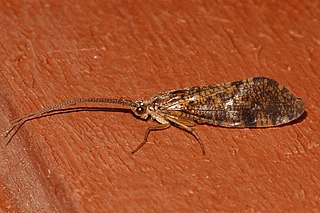
Brachypelma is a genus of spiders in the family Theraphosidae (tarantulas). They may have bodies up to 6 cm long with legs of similar or greater lengths. Some species have brightly colored legs, with red or orange marks and rings.

Brachypelma hamorii is a species of tarantula found in Mexico. It has been confused with B. smithi; both have been called Mexican redknee tarantulas. Many earlier sources referring to B. smithi either do not distinguish between the two species or relate to B. hamorii. B. hamorii is a terrestrial tarantula native to the western faces of the Sierra Madre Occidental and Sierra Madre del Sur mountain ranges in the Mexican states of Colima, Jalisco, and Michoacán. The species is a large spider, adult females having a total body length over 50 mm (2 in) and males having legs up to 75 mm (3 in) long. Mexican redknee tarantulas are a popular choice for enthusiasts. Like most tarantulas, it has a long lifespan.

Brachypelma smithi is a species of spider in the family Theraphosidae (tarantulas) native to Mexico. It has been confused with Brachypelma hamorii; both have been called Mexican redknee tarantulas. Mexican redknee tarantulas are a popular choice as pets among tarantula keepers. Many earlier sources referring to B. smithi either relate to B. hamorii or do not distinguish between the two species. B. smithi is a terrestrial tarantula native to Pacific coast of the Mexican state of Guerrero.
The Banff longnose dace was a diminutive version of the eastern longnose dace, its range restricted to a small marsh fed by two hot springs on Sulphur Mountain in Banff National Park in Banff, Alberta, Canada.

Dorosoma is a genus that contains five species of shads, within the family Dorosomatidae. The five species are native to the North and/or Central America, and are mostly known from fresh water, though some may reside in the waters of estuaries and bays.

Pseudoeurycea is a genus of salamander in the family Plethodontidae. The members of this genus are commonly known as the false brook salamanders. They are found in Mexico and Guatemala.
Pseudoeurycea smithi, commonly known as Smith's false brook salamander, is a species of salamander in the family Plethodontidae. It is endemic to certain mountainous regions of Mexico. Its natural habitat is subtropical or tropical moist montane forests. It is threatened by habitat loss.

Ceraeochrysa is genus of green lacewing in the family Chrysopidae.

Turbo smithi, common name the miniature turban, is a species of sea snail, a marine gastropod mollusk in the family Turbinidae, the turban snails.
Neosarmatium smithi, is a swimming crab species in the genus Neosarmatium. Distributed all over marine and brackish waters of Indo-West Pacific regions.

Ceraeochrysa lineaticornis is a species of green lacewing in the family Chrysopidae. It is found in North America.

Chrysopini is a tribe of green lacewings in the family Chrysopidae. There are about 32 genera and 926 described species in Chrysopini.

Neophylax is a genus of autumn mottled sedges in the family Uenoidae. There are more than 30 described species in Neophylax.
Ophiogomphus smithi, known generally as Sioux snaketail, is a species of clubtail in the family of dragonflies known as Gomphidae. Other common names include the yellow-rayed lasthenium and sand snaketail. It is found in North America.

Psychoglypha is a genus of northern caddisflies in the family Limnephilidae. There are about 14 described species in Psychoglypha.

Banksiola is a genus of giant casemakers in the family Phryganeidae. There are about five described species in Banksiola.
Hexacylloepus is a genus of riffle beetles in the family Elmidae. There are about 19 described species in Hexacylloepus.

Stenotarsus is a genus of handsome fungus beetles in the family Endomychidae. There are more than 50 described species in Stenotarsus.
Agabus smithi is a species of predaceous diving beetle in the family Dytiscidae. It is found in North America.
Geophilus smithi is a species of soil centipede in the family Geophilidae found in Washington, D.C. It grows up to 28 millimeters in length, has 49 leg pairs, 25-30 coxal pores, and coxae of prehensorial legs of about equal length and width.












